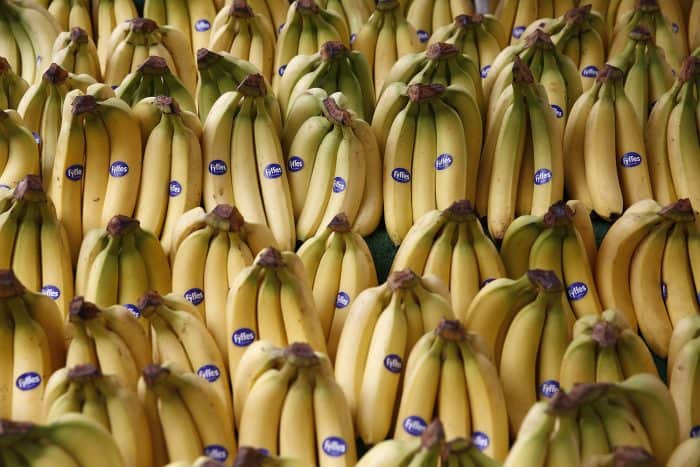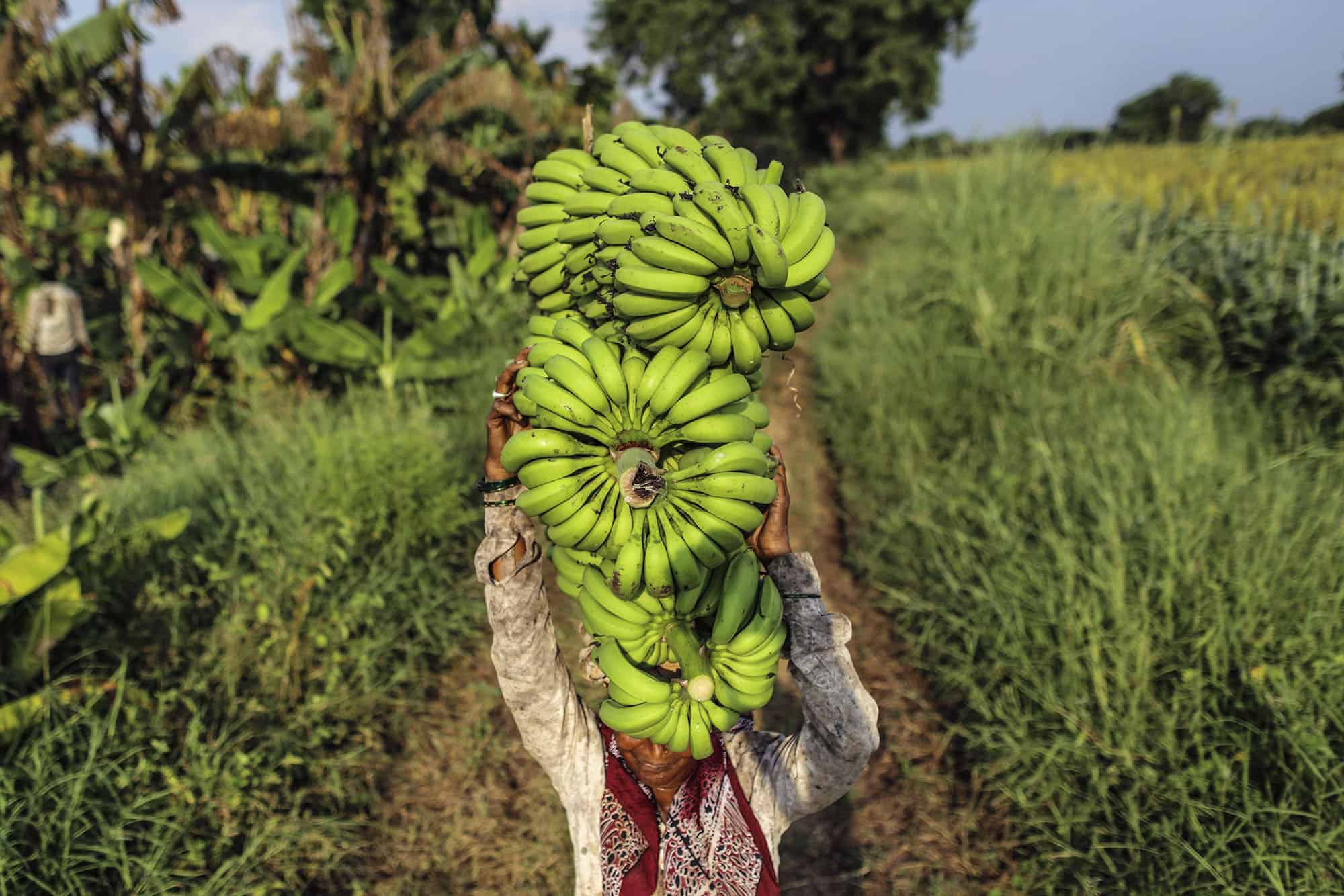MELBOURNE, Australia — Six decades after a banana-killing fungus all but wiped out plantations across Latin America, a new strain threatens to destroy global harvests.
A type of Fusarium wilt appeared this year in Australia’s main banana-growing state after spreading to Asia and Africa. While the fungus has been around since the 1990s and has yet to affect top exporter Ecuador, Fresh Del Monte Produce called it a potential “big nightmare.” The United Nations says the disease threatens supply, and Latin American growers are taking steps to limit the risk.
The industry survived the demise of the top-selling Gros Michel banana in the 1950s by switching to a different variety, called the Cavendish. But this time, there’s no ready substitute. U.S. consumers now eat bananas almost as much as apples and oranges combined, and are the biggest buyers in an export market valued at more than $7 billion.
“We don’t have anything that can replace the Cavendish,” said Gert Kema, a plant research leader at Wageningen University in the Netherlands, who studies banana diseases.
Part of the problem is the way the market evolved more than a century ago, relying on a single breed rather than several varieties.
In 1870, the founder of what became Chiquita Brands International imported 160 bunches of bananas from Jamaica to the U.S. that he sold at a profit, kicking off a U.S. industry built around perishable tropical fruit from overseas that competes with cheap, locally grown apples.
While there are more than 1,000 types of bananas, many are either inedible or consumed where they are grown. To make money on exports, growers had to rely on a single variety to ensure uniformity and keep production costs low. Until the 1960s, that was the Gros Michel, which all but disappeared after a decades-long spread of what came to be known as Panama disease.
“The monoculture, the reliance on a single banana breed that makes all this possible — that makes the low margins work — also makes that fruit very susceptible to disruption,” said Dan Koeppel, who has traveled to 30 countries to sample varieties and wrote “Banana: The Fate of the Fruit That Changed the World.”
“The biggest problem is disease,” he added.

Four crops
A lack of plant diversity isn’t unique to bananas. After a history in which more than 7,000 species were cultivated for human consumption, today just four crops — rice, wheat, corn and potatoes — are responsible for more than 60 percent of human energy intake, the U.N.’s Food & Agriculture Organization estimates.
Losing breeds can be costly. When Gros Michel was killed off, the Cavendish proved immune to the fungus strain, though the bananas were smaller, less hardy and not as tasty, Koeppel said by phone from Los Angeles. It allowed the industry to recover, but the new variety required shipping in smaller boxes rather than big containers, he said. It took years to convert operations from farms to retailers.
Still, demand took off. Global banana production surged five-fold from 1961, with increases in India and China, which together account for 37 percent of output, FAO data show.
The U.S. and European Union are the top importers, while Ecuador and the Philippines are the top shippers. The FAO estimates bananas provide income or food to about 400 million people worldwide.
Fusarium wilt
Over the past two decades, a new strain of Fusarium wilt — called Panama disease Tropical Race 4 — emerged to threaten the Cavendish, including in the Philippines and China and in parts of Africa. This year, it was found in Queensland state, where more than 90 percent of Australia’s A$600 million ($467 million) crop is grown.
TR4 enters the plant’s roots and spreads, invading vascular tissue. The first symptom is irregular yellowing of older leaves, which later turn brown and dry out. The disease poses no threat to humans.
Growers from across Latin America met in March to create a regional defense effort and will gather again in September or October, said Eduardo Ledesma, director of the Banana Exporters’ Association in Ecuador. No specific regional measures are in place, though Ecuador growers have asked the government to fumigate all containers, he said.
“If we carry out these controls at a regional level, then it will be very difficult for it to spread,” Ledesma said from Guayaquil, Ecuador. “Not impossible, because nothing is impossible in life, but very difficult.”
The strain is easily spread by people — through dirt on shoes, tires on trucks, shipping containers or other infected equipment — as well as through rain, floods and run-off water. Because most of the world’s Cavendish bananas are clones, a disease affecting one plant affects them all, the FAO says.
Dole Food said the disease isn’t present in the Americas or western Africa, from where the company imports supplies, and it’s looking at how to develop a disease-resistant banana. Fresh Del Monte said none of its company farms in Latin America has been impacted and it’s taking steps to prevent contaminated material from entering its farms and container yards. An external spokesman for Chiquita, now owned by Cutrale Group and Safra Group, declined to comment on how the company is managing the risk.
In Queensland, where residents are affectionately known as banana-benders, a farm in Tully, about 800 miles north of Brisbane, was quarantined and some plants were destroyed after TR4 was detected on March 3. Another quarantine 112 miles north of the farm was revoked after final tests were negative, and no other cases have been disclosed.
After an initial shutdown of the infected farm, the first truckloads of fruit left in April with harvesting allowed to resume under strict biosecurity arrangements. The government says it’s not feasible to eradicate the fungus.
Researchers like Wageningen’s Kema say the disease will continue to spread, despite efforts to contain it, as long as susceptible varieties are being grown.
“History is repeating itself,” banana author Koeppel said. “If you look at the map, this disease is marching.”
With assistance from Nathan Gill in Quito and Stephen Stapczynski in New York.
© 2015, Bloomberg News





